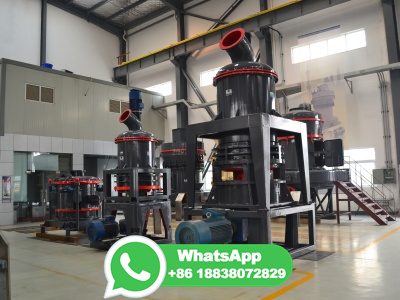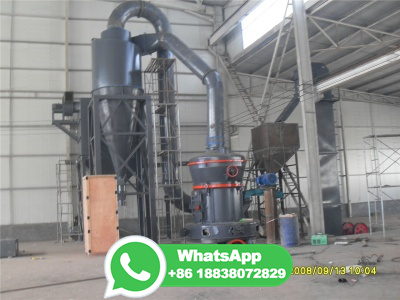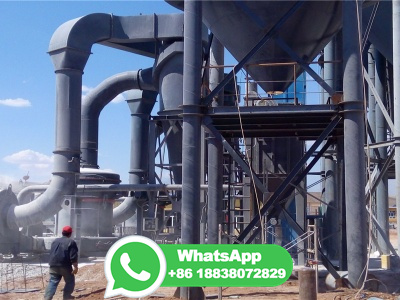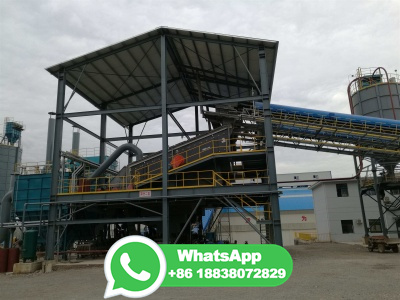
· With the depleting reserves of highgrade iron ore in the world, froth flotation has become increasingly important to process intermediate and lowgrade iron ore in an attempt to meet the rapidly growing demand on the international market. In over half a century's practice in the iron ore industry, froth flotation has been established as an efficient method to remove impurities from iron ore.


alumina, etc.) [5]. The Lowgrade iron ores can be enriched to remove gangue minerals by crushing, grinding, gravimetric separation, magnetic separation and flotation [6, 7]. Several researchers opted to apply the dry high intensity magnetic separation aiming to enrich lowgrade iron ores [4, 814, 16].


Extraction of Iron from Haematite. 1. Concentration: Haematite ore being oxide ore is concentrated by gravity separation process using hydraulic separator. The oxide is being heavier settles to the bottom while lighter impurities come to the surface and is removed. 2.


Iron is one of the most abundant metals of the Earth's crust. It occurs naturally in water in soluble form as the ferrous iron (bivalent iron in dissolved form Fe 2+ or Fe(OH) +) or complexed form like the ferric iron (trivalent iron: Fe 3+ or precipitated as Fe(OH) 3).The occurrence of iron in water can also have an industrial origin ; mining, iron and steel industry, metals corrosion, etc.


Iron ores are usually subjected to the magnetic separation process, due to the high magnetic susceptibility of iron. Magnetic separation was first applied to the separation of wolframite from cassiterite. The first magnetic separator, invented by John Prince, consisted of two pairs of electromagnets with a feed belt running over them.


· SEPARATION PROCESSES. Upgradation of MoO 3 and separation of copper, iron, zinc from roasted molybdenum ore by a leaching process. JinYoung Lee; Jyothi Rajesh Kumar * * To whom correspondence should be addressed ; HoSeok Jeon; JoonSoo Kim. Extractive Metallurgy Department, Mineral Resources Research Division, Korea Institute of Geoscience and Mineral Resources .



Ferrexpo primarily produces high grade iron ore pellets that contain either 65% or 67% iron which are the highest grades in the global pellet industry. Production of our highest grade (67% Fe) direct reduction pellets commenced in 2020, and through investment in our operations, we are delivering volume and quality enhancements throughout our production process.


The process of removal of unwanted material from the ore is known as concentration or dressing or benefaction of ores. It involves several steps. The separation of required material from the ore is dependent on the differences in physical properties of the compound of .


Such as iron obtained from ore of iron (Hematite) built the foundation of industrial revolution. ... Extraction of Metals from Ores . The process of extraction of pure metals from their ores, ... In this method ores are dissolved in the chemicals so that matrix is left behind and metal is obtained from the chemical solution.


· The extraction of iron from its ores is quite a technical process. The iron ore is first roasted in air to produce iron(III) oxide which is mixed with coke and limestone and then further heated to a very high temperature in a blast furnace. These materials are loaded into the blast furnace from the top while a blast of hot air is introduced into it from beneath via small pipes known as tuyeres.


Iron, when extracted from iron ore such as haematite containing iron (III) oxide, Fe2O3, in a blast furnace is called iron extraction blast furnace metallurgy. In this reduction reaction, oxygen is removed from the iron (III) oxide to leave behind iron. Generally, the extraction of metals and their isolation are based on three major procedures.


· Mineral processing is the first thing that happens to ore and mineralbearing rock after they leave the mine or quarry . There are four steps in mineral processing: sampling/analysis, comminution, separation/concentration, and dewatering. This article is the first in a series about mineral processing and covers the first two steps.


technologies for the beneficiation of these type iron ores are wet magnetic separation in low intensity magnetic field and reverse flotation of quartz. When dealing with the iron ore from a South African mine with a grade of % Fe and % SiO 2,the magnetic separation process could generate only



tion processes of copper, iron and nickel oxides with ammonium hydrofluoride the process flowsheet of se paration process of ore concentrate on individual oxides was developed (Fig. 8). The only agent used for the gi ven process is ammonium fluoride (NH 4 F) or ammoni um hydrofluoride (NH 4 ) which is reclaimed and


Iron ore is a chemical sedimentary rock that people have used as an important source of metal. Chat. ... The process of separating metals from their ores is called extraction. Based on the composition of the deposit, the price of extracting the metal changes, so the. Chat.


· Chemical separations involve isolating metals and minerals from their ore by chemical processes such as (for the most important ones): Solvent extraction : separation of one or more substances from a mixture by treating an aqueous solution of the mixture with a solvent that will extract the required substances, leaving the other undesirable materials behind.


· Iron ores with lower iron content such as taconite are first processed to concentrate the iron level and drive off volatile impurities. The iron ore is dressed or crushed into in. chunks, which increases surface area for reactions. Magnetic separation is used to remove some of the undesirable minerals or gangue in the crushed ore.


· The ion reverse flotation is suitable for the flotation separation of ironcontaining ore with a more complex composition, but requires a high grade of minerals. Therefore, it's necessary to add an enrichment process before iron tailings start the flotation separation to .


· Dense Media Separation – a Valuable Process for Preconcentration ... iron ore industries to produce either a final product or as a preconcentration step. ... can be optimised for the target minerals as well as reduced consumption of water and chemicals.



separation techniques is a challenge, ... of the heavy iron ore minerals. Most processing plants never exceed the 60% separation efficiency level (Barrios, 2009). ... A representative subsample was submitted for chemical analysis, results are given in Table 1. The as received

إذا كنت مهتما في شركتنا أو المنتجات، ترحيب لزيارة شركتنا أو المكاتب المحلية. يمكنك أيضا الحصول على الاتصال معنا من خلال الاستشارات عبر الإنترنت، وتقديم الطلب الجدول، والبريد الإلكتروني والهواتف. موظفينا يجب بكل إخلاص تقديم معلومات المنتج، تطبيق المعرفة و خدمة جيدة بالنسبة لك.
Copyright © .CNمحطم All rights reserved.Sitemap